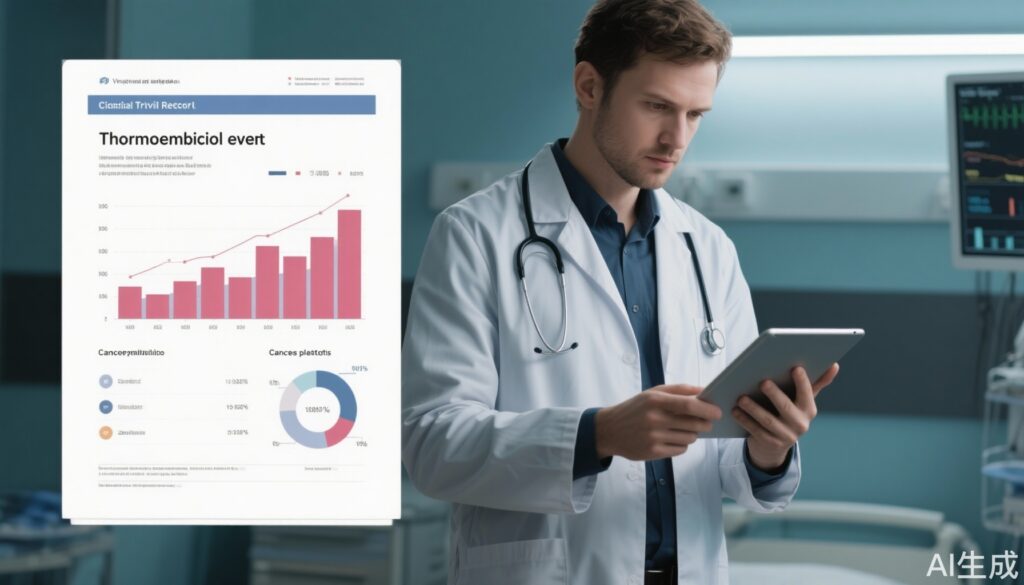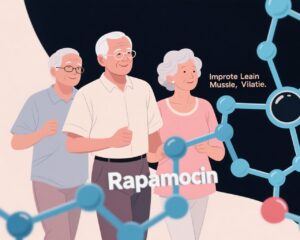Introduction and Disease Burden
Cancer-associated thrombosis, encompassing both venous thromboembolism (VTE) and arterial thromboembolism (ATE), constitutes a significant source of morbidity and mortality among cancer patients. Despite the recognition of cardiovascular adverse events as a rising challenge in oncology survivorship, there remains a critical gap in the consistent and accurate reporting of these events in cancer clinical trials. Vascular toxicity, including deep vein thrombosis (DVT), pulmonary embolism (PE), acute coronary syndrome, and ischemic stroke, profoundly impacts treatment continuity, quality of life, healthcare resource utilization, and survival. Data from population registries highlight an alarming trend: non–cancer-related mortality, often attributed to thromboembolism and infections, now surpasses cancer-related deaths, especially in younger patients. Effective primary prevention strategies are available; however, their implementation hinges on precise quantification of thrombotic risk derived from robust clinical evidence.
Study Design and Reporting Challenges
Cancer clinical trials predominantly focus on therapeutic efficacy, often relegating adverse event reporting, particularly thromboembolic events (TEEs), to a secondary status with a lack of standardized criteria. Analysis of randomized controlled trials (RCTs) across various malignancies demonstrates profound under-reporting and misreporting of VTE and ATE. This discrepancy arises from multiple factors: heterogeneous reporting criteria, suboptimal categorization using the Common Terminology Criteria for Adverse Events (CTCAE), and subjective attribution of events to anticancer therapy versus patient comorbidities or baseline thrombotic risk.
Moreover, many trials do not explicitly report composite VTE/ATE outcomes or fail to include clinically important asymptomatic events such as incidental PE, distal lower extremity DVT, or catheter-associated thrombosis. Early trial termination, insufficient follow-up duration, and ethical concerns regarding therapy discontinuation upon event detection further complicate accurate event capture. Additionally, proprietary restrictions on trial data limit external validation and comprehensive meta-analyses.
Key Findings: Evidence of Under-reporting and Clinical Implications
Significant evidence points to underestimation of thromboembolic events in cancer therapeutic trials. For instance, in an advanced colorectal cancer trial, centrally reported VTE incidence was only 1%, whereas thorough chart review revealed a true incidence exceeding 10%. Similar patterns emerge when comparing trials primarily designed to assess anticoagulant prophylaxis versus those evaluating anticancer efficacy, with the former reporting substantially higher VTE rates consistent with real-world data.
Critically, competitive risk analysis—a statistical approach accounting for death as a competing event—is often absent in oncology studies, resulting in artificially low reported VTE incidences. Furthermore, the trial setting often encompasses later lines of cancer therapy, reflecting a patient population with a lower cumulative thrombotic risk compared to earlier disease stages where these therapies may later be positioned.
Neoplastic and treatment factors contribute variably to thrombotic risk. Central venous catheter–related thromboses and asymptomatic VTEs carry substantial prognostic importance and are frequently overlooked. The risk of catheter-associated thrombosis is significant, necessitating guideline-recommended anticoagulation strategies. Incidental and distal thrombotic events have recurrence rates and mortality risk on par with symptomatic events, underscoring the necessity for their accurate inclusion in trial reporting. Moreover, superficial vein thrombosis in cancer patients confers thrombotic risk comparable to that observed in noncancer patients with VTE.
The underestimation of ATE, a parallel yet less studied phenomenon, stems from selective trial enrolment excluding patients with recent cardiovascular events, limited event adjudication, and cancer-type specificity. Notably, the use of immune checkpoint inhibitors (ICIs) illustrates this gap: seminal RCTs reported low thrombotic event rates, whereas real-world studies reveal substantially higher VTE and ATE incidences, some demonstrating a delayed temporal increase in risk, which RCTs with limited follow-up failed to capture.
Expert Commentary
The current landscape of thromboembolic event reporting in cancer trials urgently demands reform. Stakeholders must acknowledge the multidimensional impact of vascular toxicities on patient outcomes and trial validity. The International Society on Thrombosis and Haemostasis (ISTH) has advocated for refined, standardized reporting criteria that distinguish event subtypes and incorporate competitive risk adjustment. Complementing this, CONSORT Harms guidelines have integrated comprehensive recommendations for transparent adverse event reporting, emphasizing unbiased, aggregated presentation of TEEs.
Expanding eligibility to encompass medically complex patients, enhancing researcher training on TEE recognition, and extending trial follow-up to mirror clinical treatment timelines will improve risk assessment accuracy. Furthermore, mandated public availability of individual participant data will facilitate meta-analyses and real-world comparisons critical for evidence synthesis.
Critically, trial sponsors, regulatory agencies, and journals must enforce these standards, recognizing that reliable thrombotic toxicity data are essential for informed clinical decision-making and patient consent. Until these measures are widely adopted, oncology professionals base preventive interventions and risk-benefit analyses on incomplete data, potentially compromising patient care.
Conclusion
Accurate and uniform reporting of venous and arterial thrombotic events in cancer clinical trials is imperative. Failure to adequately capture and report these events undermines our ability to estimate true thrombotic risk, implement effective primary thromboprophylaxis, and provide comprehensive patient counseling. Recommendations include adoption of ISTH criteria for TEE definitions, inclusion of composite VTE and ATE endpoints, extension of trial follow-up periods to capture late events, and public data sharing for transparency and secondary analyses.
As cancer therapies evolve, particularly with the integration of immunotherapies and targeted agents, the thrombotic risk landscape shifts, necessitating vigilant surveillance and reporting. A multidisciplinary approach involving oncologists, hematologists, cardiologists, and thrombosis specialists optimizes patient outcomes but relies fundamentally on the quality and completeness of data generated from clinical trials. This urgent call to action aims to catalyze improvements in trial design, conduct, and reporting to safeguard the health and longevity of patients living with cancer.
References
1. Kuderer NM, et al. Blood. 2019;134(3):153-160.
2. Carrier M, et al. J Thromb Haemost. 2018;16(12):2413-2420.
3. Lyman GH, et al. J Natl Compr Canc Netw. 2019;17(4):383-396.
4. Khorana AA, et al. J Clin Oncol. 2020;38(3):224-230.
5. Bibbins-Domingo K, et al. JAMA. 2016;316(17):1869-1879.
6. Connors JM. Blood. 2017;130(1):90-96.
7. Blom JW, et al. J Clin Oncol. 2005;23(15):3857-3862.
8. Heit JA, et al. Chest. 2001;119(1 Suppl):122S-130S.
11. Khorana AA, et al. N Engl J Med. 2019;380(8):711-719.
12. Kuderer NM, et al. JCO. 2025;43(26):2851-2855.
22. Vedovati MC, et al. J Thromb Haemost. 2017;15(8):1548-1558.
23. Khorana AA, et al. J Natl Cancer Inst. 2019;111(10):1014-1021.
28. Lyman GH, et al. Blood Adv. 2021;5(6):1865-1878.
36. Kuderer NM, et al. Cancer. 2022;128(5):843-849.
42. Scappaticci FA, et al. JAMA. 2007;297(15):1685-1694.
43. Van Es N, et al. Thromb Res. 2020;190:23-29.
44. Moik F, et al. J Thromb Haemost. 2021;19(4):1091-1101.
45. Kuderer NM, et al. JCO. 2020;38(25):2928-2937.
46. Moik F, et al. Blood Advances. 2021;5(6):1925-1933.
47. Ioannidis JP. JAMA. 2018;319(1):21-22.
53. Doshi P, et al. BMJ. 2013;346:f105.
54. Khorana AA, et al. J Natl Compr Canc Netw. 2021;19(1):29-40.
55. Lyman GH, et al. J Thromb Haemost. 2020;18(1):27-39.



